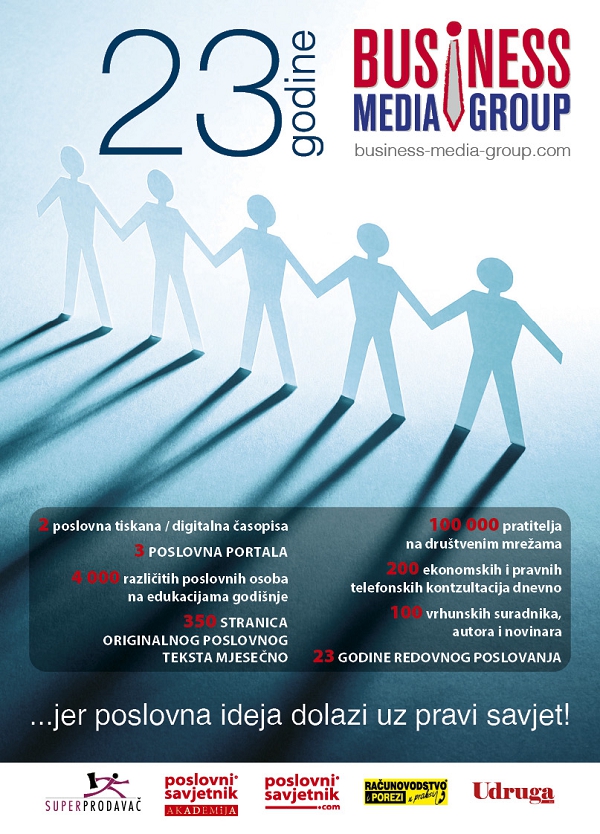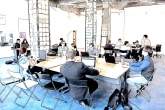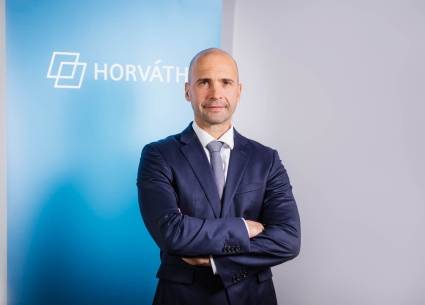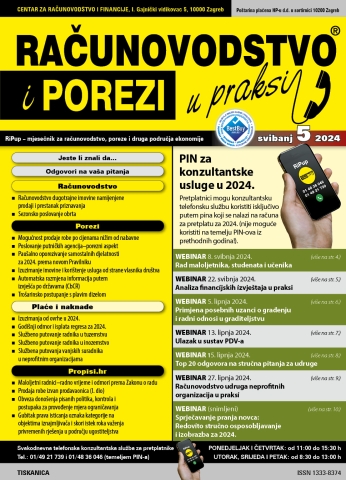John Lodder: Disruption is our 'New Normal'
In my September column I explain why ‘Disruption’ is the ‘New Normal’ for people and organizations. I give three basic explanations; organizations and management styles are outdated, our brain is not built for disruptions and new generations don’t accept ‘old’ norms, values and management styles anymore.
Especially Social Disruptions show issues like stress, high (mental) sick leave, burn-out (global 11% of employees).
Accenture (a USA global consultancy firm) did a research in 2023 under 10,000 companies in 18 industry sectors using their own Disruptability Index (with 62 indicators) to measure current levels and susceptibility to disruption.
The overall level of disruption went from 4% during 2012-2017 up to 200% in five years (2017-2022). In figure 1 you also see the disruptions in six important segments.
Figure ! – Total disruption and in six segments.
In figure 2 you see the actual and susceptibility scores to future disruption in 18 industries.
Figure 2 - The current vs. future disruption in 18 industries.
Executives are aware of the threat
C-Suite mentions of ‘disruption’ have increased significantly in the past 10 years as we can see in many studies.
And with it the anxieties of executives increased across industries. They realize that ca. 70% of companies are currently in, or stand on the brink of significant disruption.
Disruption became a persistent condition for industries and its people; 83% of the industries that Accenture analyzed spent at least five years in the same period of disruption. Industries fall within one of four periods of disruption:
Viability: The opportunity lies in reinvention and growing the core by offering new products/services in existing markets, but also existing products/services in new markets.
Durability: The period where companies have a great opportunity to seek and experiment with reinvention and new business ideas.
Vulnerability: This blind spot distracts many from a great reinvention opportunity: scaling up new ideas and venturing into new markets.
Volatility: Most companies focus on resolving pressing issues in the core business and on reinvention; what’s much harder is redirecting investment capacity to grow new business.
Figure 3 – Disruption is a way of life, the ‘New Normal’.
What are the three basic explanations for Disruption as our ‘New Normal’:
1. Organizations and management styles are merely based on the lifecycle of the 1960’s and function based on outdated and obsolete organizational forms and managerial approaches,
2. It’s evolutionary in terms that our brain is not built for handling and coping with disruptions,
3. New generations don’t accept today’s norms, values and management styles because they have other, for their future oriented aspirations.
1 - How does disruption impact organizations and people?
As shown in Figure 4 organizations have life phases and a certain life time. After reaching the top or the maturity phase the decline phase starts. This is the last moment a company has to change and reinvent its business plan, once the organization reaches the decline phase the company is too late and is on its way to bankruptcy. The theory says 10% over the top is already too late.
Figure 4 – The phases of an organization
The S-curve for the lifetime of organizations is given in figure 5. To survive over the long haul, a company must reinvent itself periodically, jumping from the flattening end of one business performance curve to the rising slope of another. Very few companies make the leap successfully when the time comes. That's because they start the reinvention process too late. Once existing business begins to stall and revenue growth drops significantly, a company has less than a 10% chance of ever fully recovering.
There is a striking difference between companies that have successfully reinvented themselves and those that failed. High performers manage their businesses not just along the growth curve of their revenues but also along much shorter, though equally important S-curves: tracking the basis of competition in their industry, renewing their capabilities, and nurturing a ready supply of talent. By planting the seeds for new businesses before revenues from existing ones begin to stall; these companies enjoy sustained high performance.
Figure 5 – The average lifetime of an organization in an S-curve.
Most people are complaining that ‘everything goes so much faster’ and there are too many things to do in less time.
New is the increasing higher speed that threatens the lifecycle of organizations. Most people are not aware that the average lifetime of most companies shortened from 75 year in the 1960’s to 6 years in 2020 and to 3 years in 2023.
To survive organizations are forced to anticipate faster as ever to developments in their different markets (e.g. employees, core business, customers, competitors, suppliers, sustainability, laws etc.) and take action.
We call this action to survive: ‘Reinvention’. (We base the average maturity / top of an organization at 50% of the Gauss-curve.)
In average, companies reinvented itself at 37,5 years in the 1960’s which went up to an average reinvention every 3 years in the 2020’s and 1-3 years in 2023. (Source: the Reinvention Academy)
If we look at generations like the Maturists (born 1928-1945) and Baby boomers (born 1946-1964) we see that they started to work in a company and in general stayed there till their retirement. Their world was ‘small’ and very stable, not interconnected and without significant changes. These people experienced 1, max. 2 small change projects in their working life. They had jobs for life and employers defined their career.
This is different for generations X (1965-1980), Y (1981-1996) and the elderly of Generation Z (1997-2012).They grew up with a laptop, a tablet and mobile phones; they work in different companies and experienced a large change every 1-3 years and small changes in between. They grew up in an interconnected world and society and have other ideas, visions and expectations as the previous generations. For instance: overall aspirations of Gen. X are a good work-life balance, Gen Y seeks freedom and flexibility and Gen Z wants security and stability.
Changing of organizations
In previous columns I wrote about and gave examples of companies that changed their organizational structures fndamentally. A few examples are multinationals like Hajer (China), Bosch (Germany), Philips and ASML (The Netherlands) who created autonomous teams with clear responsibilities, all they need to do is to cooperate and achieve their self-formulated goals.
Smaller companies and start-ups are creating network-organizations and also lay responsibilities on the lowest levels. They work in a ‘holocracies’ format, flat organizations that differentiate them from the traditional top-down management structures and they also created an organic structure of autonomous teams.
They all look at numbers as shown in figure 6 and they experiment with rotating positions and roles. These companies are consciously and creatively searching for improvement of engagement, independence, happiness and profit. And most of them are very successful.
Figure 6 shows the status or consequences of ‘traditional management styles’ and organizational structures.
23% of global employees are thriving and engaged in their jobs, this unfortunately means that 77% are not engaged!
59% of employees are ‘quite quitting’, meaning they work their 8 hours a day and refuse to do anything extra, while 18% are ‘loud quitting’ meaning they are directly harming the company.
If we add 11% of global burn-outs then it’s clear that this is an expensive consequence for companies and society.
Figure 6: The health of the global workforce.
2 – It is evolutionary: our brains are not built for this much uncertainty
Before covid-19 our brains could hardly process all the changes that came our way. But now that the pandemic seems to have largely passed, our brains are working overtime. It can't handle all the uncertainty.
‘Disruption’, this word was already a word that was constantly floating around some years ago. The world was changing rapidly due to, for example, the rise of all kinds of platform companies, the meteoric rise of China and everything that climate change entails.
It led to different questions from employees (e.g. millennials who are more critical about whether they want to work for a company) and customers (who nowadays also demand more from a product or its supplier).
These changes were accelerated by the covid outbreak. And as if that didn't cause enough uncertainty, the pandemic also meant that a number of things that were previously fairly predictable have now been turned upside down. For example, where we do our work has changed how we collaborate with colleagues and how we behave.
Quest
No wonder that managers around the world are wondering what 'the new normal' will look like write Heidi Grant and Tal Goldhamer in Harvard Business Review. To immediately add: 'Anyone who think (s)he knows will later come to the conclusion that things have to be done differently.'
Grant and Goldhamer both work for the American branch of EY. They advise executives to realize that there has never been so much uncertainty in their organizations before. 'Really every aspect of our lives has been affected. We must recognize that the human brain is not (yet?) designed for this.
Leaders across industries are feverishly trying to figure out what the “new normal” needs to look like, which seems to be constantly shifting under their feet. To stay motivated as we encounter unprecedented levels of uncertainty in every aspect of our lives, we should understand that the human brain simply was not built for this.
Knowing what your brain does well, and what it does surprisingly poorly, can give you a much clearer sense of the strategies you need to not just endure, but to thrive.
For most of human history, we have been hunter-gatherers, living in groups where individuals had established roles and lives. While sometimes dangerous, life was largely predictable. The brain evolved to be remarkably good at recognizing patterns and building habits, turning very complex sets of behaviors into something we can do ‘on autopilot’. (e.g. did you ever drive home from work and end up in your driveway, with no memory of actually driving home? That’s the kind of thing we’re talking about.)
Given that habits and recognizable patterns are kind of its “thing,” the brain evolved to be uncertainty-averse.
When things become less predictable, and therefore less controllable, we experience a strong state of threat.
You may already know that threat leads to “fight, freeze, or flight” responses in the brain.
You may not know that it also leads to decreases in motivation, focus, agility, cooperative behavior and self-control, sense of purpose and meaning, and overall well-being.
In addition, threat creates significant impairments in your working memory: you can’t hold as many ideas in your mind to solve problems, nor can you pull as much information from your long-term memory when you need it. Threats of uncertainty literally make us less capable, because dealing with them is just not something our brains evolved to do.
The good news is that, from decades of studying human brains and human behavior, we know quite a bit about how to take the experience of threat from something overwhelming to something manageable. Whether you’re trying to keep yourself motivated and engaged, or you’re a leader trying to help those in your care, here are three strategies based in science that can keep the brain in a good place.
A - Set expectations with realistic optimism
The concept of realistic optimism is simple but powerful: believe that everything is going to work out just fine, while accepting that getting there might not be easy. Research consistently shows that having positive expectations, or as social psychologist Albert Bandura called it, a strong sense of self-efficacy, is essential for staying motivated in the face of obstacles and setbacks.
People often mistakenly believe that being “positive” means believing that you’ll succeed easily or that success will happen to you. Work by NYU professor Gabrielle Oettingen has shown that this unrealistic optimism consistently predicts failure, when you think things will come easily you’re rarely prepared for when they don’t.
So, when thinking about the changes and uncertainty from the last pandemic to working life in general will surely bring, set realistically optimistic expectations for yourself and for others. Believe you will get there, and acknowledge to yourself and everyone else that uncertainty involves having to experiment to get things right.
It means not everything works right away. It means if we hang in there, eventually it can get better than it is now.
B - Lift to bigger-picture thinking
You can think pretty much anything at different levels of abstraction or concreteness. Psychologists call this level of construal. For example, the act of voting can be described as “participating in democracy” (high-level construal) or “checking a box on a form” (low-level construal).
The level of construal we use to think about our actions turns out to have a significant impact on our behavior. When we think about the larger meaning or purpose that our actions serve (high-level construal), we’re more inspired and motivated and feel greater boosts to self-esteem and well-being. When we drop down to the nitty-gritty details of what we’re doing or need to do, we’re better at solving concrete problems and anticipating obstacles. Each level of construal has benefits, which is why it’s best to shift our thinking and lift up and drill down as needed.
Unfortunately, it can be all too easy to end up “in the weeds” and stay there; our brains naturally shift our thinking down to a lower level of construal when we encounter difficulty or uncertainty. Motivationally, however, these are precisely the moments we need to remember why we’re doing what we’re doing in the first place.
We developed a unique training program to help people to do exactly that, where leaders and professionals discover and clearly articulate the words of their personal purpose and vision through storytelling.
This enables them to connect their personal purpose and vision to the work they do each day, lifting up to the “bigger picture” when they need it most. Not surprisingly, people who completed the program report that they’re significantly better able to stay focused on what matters most and remain more resilient in the face of challenges.
C - Embrace candor
Working through so much change and dealing with unexpected setbacks means we need to be constantly and honestly be communicating with one another to co-create the right new norms and habits.
It’s not just talking about giving useful performance feedback, we’re talking about the everyday conversations about what’s working and what isn’t, that are needed as we figure out what a new normal needs to be.
Of course, this sort of everyday candor is hard. People worry about how they come across to others as they share truthful perspectives. They worry that their opinions might not be welcome, or valued. They worry about bruising feelings and damaging relationships. And while these concerns are valid, in practice, the far greater damage is done when people operate in an environment that lacks transparency and empathy.
People feel and know when you aren’t telling them everything, and the uncertainty threats that can create are off the charts.
We created a program called ‘Everyday Candor’ to enable open and honest communication about uncomfortable topics. Instead of a typical workshop-style experience, ‘Everyday Candor’ is a team-based toolkit, helping team’s surface specific obstacles to candor and decides on a small set of new habits to adopt together.
It is, in fact, essential that this work be done at the level of teams, because only there can you create new norms and provide the necessary support to reinforce one another when discomfort arises.
Participants in this program now ask each other daily, “Could I be candid with you?” and “May I have your candid perspective?” creating a new common language that better enables us to solve for the new normal together.
Thriving through change and uncertainty is not easy. However, armed with the right strategies to help yourself and others, we’re confident that (realistic) optimism is indeed warranted. Remember what matters most, keep open and honest communication flowing, and know that in the end, it will be better.
3 – People don’t accept today’s norms, values and management styles anymore
Figure 7 shows that the average employee experienced 10 company change projects in 2022. (Up from 2 in 2016)
Only 43% of employees are willing to support company change projects in 2022. (Down from 74% in 2016)
And, on top, we know that according to the BCG-group 75% of all change projects fail. In this turbulence the emotions of, especially employees, are not recognized and not managed well with consequences in the workplace.
Figure 7: The effect of change projects on employees.
So, what are emotions?
Neuropsychologist Julia DiGangi explains this in her new book ‘Energy Rising’ writes Karin Swiers in MT-Sprout.
She combines the latest insights in neuroscience, her own research at Harvard and Columbia University and decades of clinical practice experience. She has, among others, 'treated' traumatized soldiers, victims of sexual and other violence, as well as top managers and corporate teams.
Emotions are, clearly said, interactions between chemical and electrical energy in our brain. Emotions are literally your first language. You communicate with it immediately after birth. They are primitive, raw, unvarnished bursts of neural energy that you physically feel. But, you can use the energy of your emotions in a much more targeted and powerful way. Not only to help yourself, but also to improve your leadership.
Emotions are contagious
If you are in a bad mood, frustrated or distant, you also transfer that energy to your employee and/or team.
Negative emotions
DiGangi emphasizes that your emotional life runs on the real, physical energy of your brain. Fear, anger, love, sadness, irritation, longing, joy, uncertainty… these are all sensations created by the energy of your brain.
DiGangi divides them into two categories: emotional pain and emotional strength.
1.Emotional pain includes all the feelings you don't like, such as stress, jealousy, disappointment, frustration, shame, and so on. “I call that pain, because whatever word you use for it, your brain processes all these sensations in the same way.”
2.Your emotional strength directly depends on how you deal with your emotional pain.
So that is not avoiding negative feelings, on the contrary. “All that ignoring, scrolling, pretending, numbing and denying takes an enormous amount of neuropsychological energy,” DiGangi says, the only thing you achieve with that is exhaustion. If you continue to ignore negative feelings, burnout will follow.
You can't even avoid emotional pain, because it is neurobiological energy. According to the laws of physics, energy cannot be destroyed, but it can be transformed.
Distributing energy
In her book she describes how to convert emotional pain into emotional strength, including practical exercises and examples from her own work. Using eight neurological codes, she discusses, among others, how your brain works, how it wants to protect you, what the influence of patterns is, but also how your parents have programmed you.
Often you don't even realize what emotional pain is doing to you.
For example, a colleague from the management team asks you to collaborate on a project. You want to say no, because you're already busy enough. Still you say yes. With your behavior you disconnect yourself from your emotions: you do one thing, but what you feel is the opposite.
You now have to divide your available energy between your behavior and your emotions. Your brain also creates negative emotions, such as irritation. You conclude that your colleague should have known that you cannot have this project. And before you know it, you're off to even more frustration or anger.
Important messengers
Ask yourself: why didn't I listen to my true feelings and then address them with my colleague?
That's usually because you don't know how to deal with your negative feelings. You find that so difficult that you prefer to give the reins to someone else. In this way you (usually unconsciously) allow other people to activate your energy. But negative feelings are important messengers, they give you direction.
1.If you feel exhausted, you need rest, not more work.
2.If you feel rejected, that is actually the signal that you need more connection.
Emotional pain helps you determine what you really want.
So say no when you feel no and respect yourself.
Your self-worth does not depend on what you do or what other people think of you.
You are good as you are. From now on, connect that energy to yourself.
This way you no longer divide energy. You don't have to bridge the gap between behavior and feelings. You feel complete and you can use more energy and thus achieve what you really want.
That is your emotional power.
Making an impact
Yes, but… That's the reaction managers usually get, if they get a reaction. You can't say no to your CEO, right? Don't you understand how difficult my job is? These are human reactions but realize that at that moment you are the cause of your negative feelings. Not the others.
Of course it is easier to please people, but in the meantime you deny yourself. And that is not leadership.
There are many leaders who are intensively concerned with the emotional experiences of other people.
They do not realize that it is their own emotional experiences that make an impact on themselves and other people. As a leader, you set the emotional tone of your team.
The leader cannot directly control someone else's emotional state, but people are influenced by the emotional energy of the leader.
Conflicting signals
If you are in a bad mood, frustrated or distant, you also transfer that energy to your team. And, DiGangi emphasizes, especially to yourself.
That also means that, to become a better leader, you must first focus on your own emotional pain, for instance:
-How can you feel empathy for other people's emotional pain when you ignore your own?
-How can you involve people in a meaningful way if you don't even feel like you belong?
-How can you give good feedback if all you do is bombard yourself internally with criticism?
-How can you be enthusiastic when you feel exhausted?
-How can you make your people feel safe, while you constantly feel threatened?
As a result, as a leader you send out conflicting signals, which is extremely confusing for your people.
For example, you complain that you have too few enterprising people in your team. They are not autonomous enough. You want more self-starters.
BUT, at the same time you ask a lot of questions, you give a lot of advice, you constantly check people and you organize a lot of meetings.
In this way you basically say to your people 'go ahead, as long as you make sure that I can approve everything first'.
Command and Control is a weakness
A person who commands and controls another person factually does not trust her- or himself.
Your team members want the opposite: real autonomy. Let them go about their business without too much interference on your part. DiGangi compares it to a tug-of-war: the problem is that everyone uses an enormous amount of energy, but doesn't make any progress.
She sees this urge to control, especially in managers who are preoccupied with their own emotional pain.
She sees command & control as a weakness.
What you as a leader are actually communicating at that moment is that you have lost your emotional strength.
You are unsure about what you believe, think and do. Only if you get your people on your side, and do exactly what you say, then you will feel reassured. But leadership is about much but certainly not about being right.
Trust in yourself
People don't like being constantly pulled on them energetically. The quickest way to end such an exhausting tug-of-war is to drop that rope. You, as the leader drop it, not them. That is not a sign of weakness, but a very strong move.
Letting go does not mean that you constantly give in to the people around you. You do no longer need the approval of others. What you already know no longer needs to be constantly confirmed.
'You may think that you are ordering other people around because you don't trust them. But the truth is, you don't trust yourself. The only person you can really control is yourself.
It is not your job to motivate and inspire others. You must be motivated and inspired by yourself and trust that others will find you motivating and inspiring.
Magnetic force
The hierarchical system, command and control, has always been a wrong approach writes DiGangi.
'Given what we now know about the human brain, this is not sustainable. Spending all your energy on leading in a way that the brain does not support is actually an idiotic task.'
'People have a deep desire for freedom. They have a need for the freedom to think differently, to work differently, to feel differently and to interact differently.
Whether you call it independence, preference or autonomy, the semantics don't matter.
The underlying neurology is about an individual's drive to choose a life that is most meaningful to him or her.'
So free yourself from the exhausting energy of commanding, controlling, persuading, demanding, involving or motivating others. Let what you do and say come from the right energy. That makes leadership so much easier.
People will follow you because they are attracted to your magnetic power as a leader.
Not because they have to, but because they choose to.
Tomorrow’s Leadership
Leaders need to be real ‘people persons’ with trust in themselves and their abilities. They have strong ’soft skills’ and are an inspirational coach for others, (s)he is a team player.
The only way to future-proof your business is for the leader to embrace ‘the art of changing’:
See ˝Change not as a punishment but look at Change as the ultimate freedom to make choices!˝
Integrate ‘change readiness’ in your organization culture and apply two standards:
1.Even if it is not broken ‘Fix it’, you don’t have much time
2.Break and fix it before somebody else in your market does it.
The challenge we face isn’t about trying to survive disruptions until things stabilize, but rather about learning to thrive in constant chaos.
The trouble is that in many big businesses, even after years of hierarchies being flattened, too many people are still too far away from the customer to properly understand their market or even to know whether they still have one.
(Roger Trapp, Forbes)
Now ask your team: How good is my organization in changing and reinventing?
-Excellent, we rock!
-Good, but could be better.
-We only see change when it hits us.
And then continue the exchange with questions like e.g.:
-Which areas of your work makes you feel thriving?
-Which areas of your work do not feel good?
-What can we do to improve that?
-What areas of your work or collaboration are in the process of disappearing, fading, vanishing, being outdated, made obsolete or in short: dying?
-How does this process currently unfold?
-Is there anything you and your colleagues can do to support the process?
-What are your elegant next steps?
-What old ways of working can die?
-What new ways of working and collaborating are ready to be born?
Do we continue to be part of the system and strengthening the problem or are we participants supporting the solution towards a new way of working, towards the HUMAN future of working and collaborating?
The choice is ours and the consequences too.
John Lodder M.A., MSc.
Povezano aktualno

























